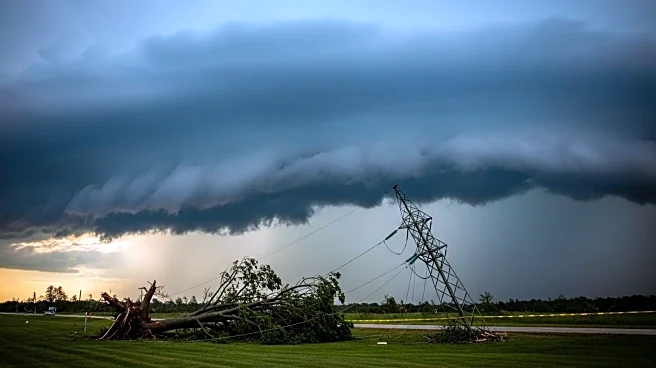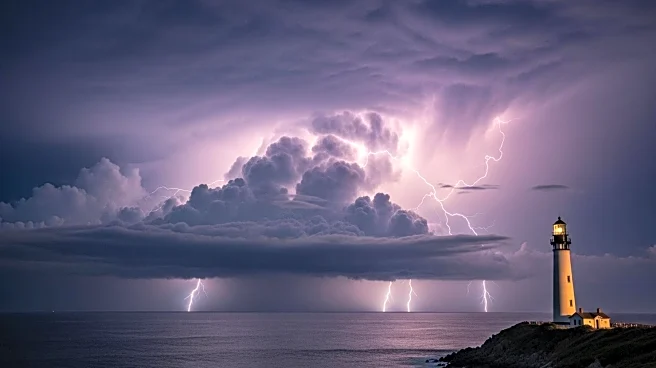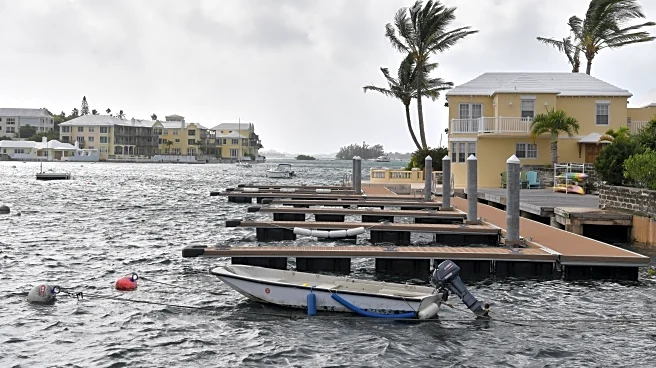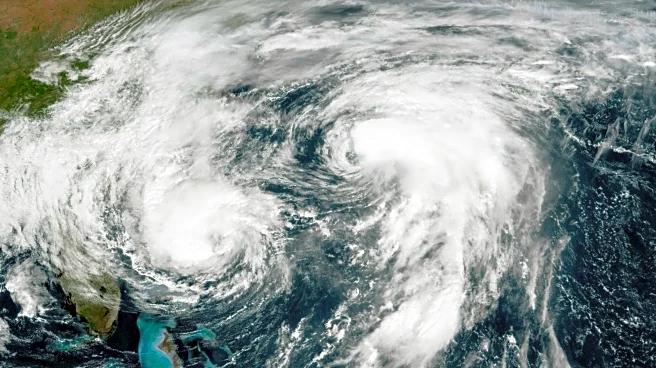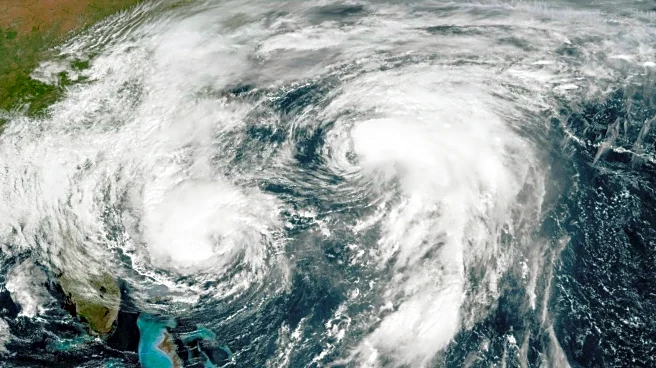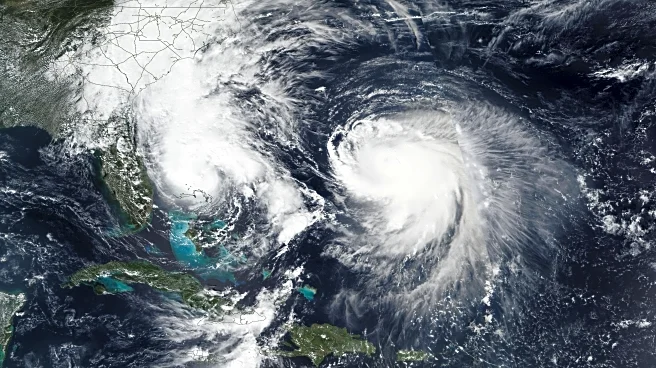What is the story about?
What's Happening?
Hurricane Imelda, a Category 2 storm, has moved past Bermuda, leaving significant power outages and downed trees but no reported injuries. The storm, which weakened to a Category 1, was located about 230 miles east of Bermuda, moving east-northeast at 30 mph with maximum sustained winds of 80 mph. Bermuda experienced major disruptions, including the closure of schools, offices, and the airport, as well as the deployment of 100 soldiers to manage infrastructure and emergency shelters. The storm also caused flooding in eastern Cuba and Haiti earlier in the week.
Why It's Important?
The impact of Hurricane Imelda highlights the vulnerability of island territories to severe weather events, emphasizing the need for robust emergency preparedness and infrastructure resilience. The storm's effects on Bermuda, Cuba, and Haiti underscore the broader implications of climate-related disasters on communities and economies. The ongoing Atlantic hurricane season, predicted to be above-normal, poses continued risks to the Caribbean and U.S. East Coast, affecting tourism, local economies, and potentially leading to significant recovery costs.
What's Next?
As the Atlantic hurricane season continues, forecasters urge vigilance, with atmospheric conditions expected to support further tropical storms and hurricanes into late October and November. The U.S. National Oceanic and Atmospheric Administration's forecast of 13 to 18 named storms, including major hurricanes, suggests ongoing threats to coastal regions. Communities and governments are likely to focus on enhancing disaster response strategies and infrastructure resilience to mitigate future impacts.
AI Generated Content
Do you find this article useful?
